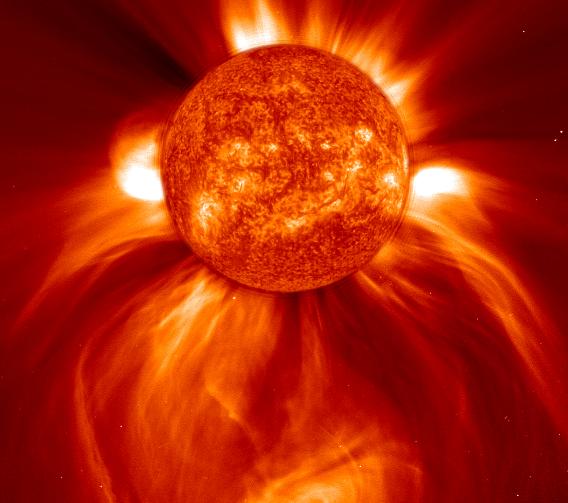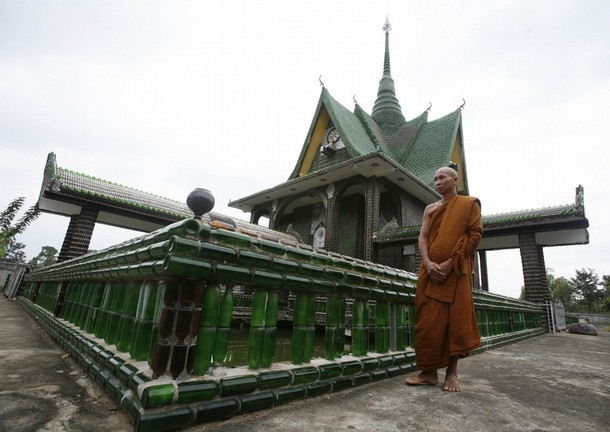
Thai monks from the Sisaket province have used over one million recycled glass
bottle to construct their Buddhist temple. Mindfulness is at the center of the
Buddhist discipline and the dedication and thoughtfulness required to build
everything from the toilets to their crematorium from recycled bottles shows
what creativity and elbow grease can accomplish.
The Wat Pa Maha Chedi Kaew temple is about 400 miles northeast of Bangkok in
the city of Khun Han close to the Cambodian border. Using Heineken bottles
(green) and Chang Beer bottles (brown) the monks were able to clean up the
local pollution and create a useful structure that will be a visual reminder
to the scope of pollution and the potential we can make with limber minds.
The water tower and tourist bathrooms are even made from beer bottle litter.
The monks were able to have the local people bring them the building materials
which beautifully reflect the Thai sun.
the greenUPGRADER has several pictures of the recent buddhist temple in Thailand.
Of course this isn’t the first glass bottle building. In this picture you can see friends making some more empties available for building with at Rhyolite, Nevada in Death Valley. How’s that for ruffin’ it? Go to the desert and drink your way to shelter. No wonder its a ghost town.
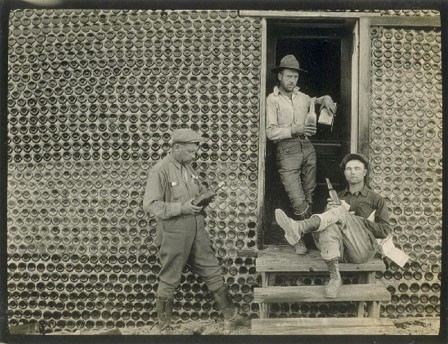
“In the old ghost town of Rhyolite, Nevada, a saloon owner named Tom Kelly, built a house out of bottles because lumber was scarce at the time. Reportedly he used some 50,000 beer, whiskey, soda and medicine bottles to build the structure which still stands today. Mr. Kelley was 76 years old when he built the house and it took him almost six months to complete.”
It is not surprising that the monks had used Heineken bottles as Alfred Heineken in 1960 had devised the ‘World Bottle’ or WOBO for short. As the story goes, Alfred Heineken had an epiphany while on a world tour of Heineken factories. When Heineken was on the Caribbean island of Curacao in 1960 he saw many bottles littering the beach due to the fact that the island had no economic means of returning the bottles to the bottling plants from which they had come. He was also concerned with the lack of affordable building materials and the inadequate living conditions plaguing Curacao’s lower-class. Envisioning a solution for these problems, he found a dutch architect John Habraken to design what he called “a brick that holds beer.”
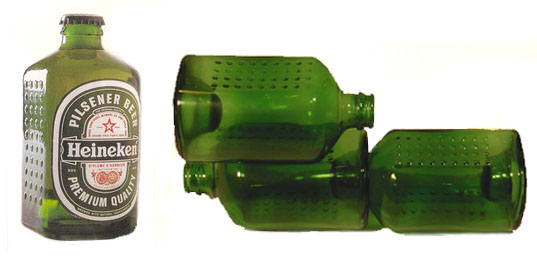
Over the next three years, the Heineken WOBO went through a design process. Some of the early designs were of interlocking and self-aligning bottles. The idea sprung from the belief that the need for mortar would add complexity and expense to the bottle wall’s simplicity and affordability. Some designs proved to be effective building materials but too heavy and slow-forming to be economically produced. Other designs were rejected by Heineken based on aesthetic preferences. In the end, the bottle that was selected was a compromise between the previous designs.
The bottle was designed to be interlocking, laid horizontally and bonded with cement mortar with a silicon additive. A 10 ft x 10 ft shack would take approximately 1,000 bottles to build. In 1963, 100,000 WOBO’s were produced in two sizes, 350 and 500 mm. This size difference was necessary in order to bond the bottles when building a wall, in the same way as a half brick is necessary when building with bricks.Unfortunately most of them are destroyed and no bottles are left. They are very rare and become a collectors item.
Only two WOBO structures exist and they are both on the Heineken estate in Noordwijk, near Amsterdam. The first was a small shed which had a corrugated iron roof and timber supports where the builder could not work out how to resolve the junction between necks and bases running in the same direction. Later, a timber double garage was renovated with WOBO siding. Alfred Heineken did not develop the WOBO concept further and the idea never got a chance to materialize.
The lack of support for the WOBO idea didn’t slow bottle buildings from popping up. I remember visiting the George Plumb’s ‘Glass Castle’ near Duncan, BC. Which was destroyed to make way for highway expansion. I still have some classic bottles from there before it was cleared away.
If you wanted you could build your own earthship using bottles, tyres, and other recycled materials. You could maybe even build a place at the Earthship Landing Zone in Taos, New Mexico.
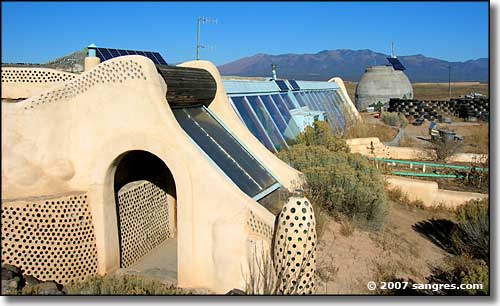
With the economic crisis I’m sure we will see more people pushed to the fringe and become desperate and build shelter with whatever is available where they are. Check out UNHOUSED for links and papers on squatting, madhousers, slum tv and Zero Yen Houses.
